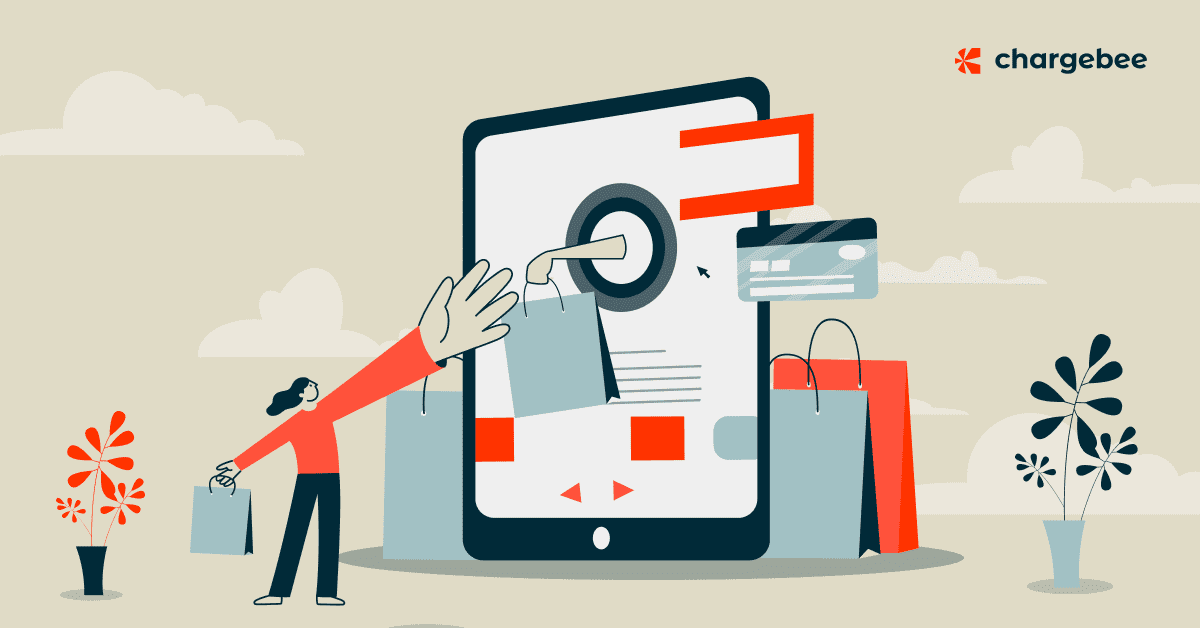What is a D2C Business Model?
A D2C company creates and sells its products or services directly to end customers bypassing traditional middlemen like wholesalers or big box retailers.
According to KPMG, the direct-to-consumer (D2C) market is expected to reach US$ 7.4 trillion with a CAGR of 12% over 2020-25. Companies like Dollar Shave Club, Quip, and others have set a great example of how creating direct relationships with customers can make your business thrive without the need for a brick-and-mortar location or needing to reduce margins working with wholesalers.
The Benefits of D2C Business Models
Because organizations are able to cut out the extraneous costs associated with distributors and wholesalers there are a lot of benefits that accompany a D2C business model.
Lower costs and improved revenue
By cutting out the retailers and wholesalers, D2C brands keep 100% of the profit from their sales. This allows companies to actually sell their product at a lower price while still maintaining healthy margins that ultimately help the company scale over time.
Better quality and competitive edge
The higher profit margins can be used towards innovating the product or service itself, using better materials, and elevating the overall quality. By creating a higher-quality product, emerging brands can level the playing field with the competition who may still be using traditional channels and in turn, sell lower-quality products at an equivalent price.
Full control of the supply chain and customer experience
Instead of the products being priced by the retailers selling them, organizations can keep a consistent pricing structure removing the multiple layers of markups. The traditional way of selling involves different retailers using their own product descriptions and prices that result in a disjointed customer experience.
With full control of the supply chain, brands can ensure that their customers have the same experience, rather than certain segments having to pay different prices depending on their region or retail provider. This seamless, or omnichannel experience can help improve how consumers view a brand.
Better customer relationships
Without the need for intermediaries, companies can leverage technology like social media to connect with their customers directly and gather relevant customer feedback. This allows companies to adjust their product accordingly and reinforces customer satisfaction. Additionally, instead of paying for a physical location, with an eCommerce website, D2C companies can increase a brand’s reach which can open them to new marketplaces.
Unified Customer Data
A D2C business model helps businesses keep all of the customer data right at their fingertips. With the advantage of directly reaching out to the end user, they can monitor retention, customer lifetime value, and more instead of receiving vague performance data from wholesalers and retailers. This can play a crucial role in creating personalized marketing strategies to improve sales.
How Do D2C Models Work?
D2C models are like a direct line between a company and its customers. The first step in creating a successful D2C business is creating a highly personalized product for your target audience.
Next, through data-led marketing campaigns, social media outreach, and strategic partnerships, the company engages directly with its target audience, building trust and loyalty. Lastly, the sales are highly simplified as customers can easily purchase products through the company’s website or other sales channels, and benefit from a seamless customer experience with prompt, personalized support.
By embracing the D2C model, companies gain greater control over their brand image, customer experience, and profit margins, as well as the agility to adapt to changing market trends and consumer demands.
Types of D2C Business Models
Direct-to-consumer business models have been used in various capacities for some time now. An early example would be cosmetic product lines or storage products that were sold by local representatives in a social gathering. The representatives would most likely be their peers, neighbors, or family members who would host events or one-on-one consultations to demonstrate the benefits of the products and process orders directly.
While this D2C model still exists, let’s explore the modern D2C business models:
1. Subscription-Based
One of the most popular direct-to-consumer models is a subscription-based approach. This creates a model where the consumer only has to start off the transaction once, and they are billed in a recurring pattern over certain periods of time, usually per month for a new product. A prime example of this would be the Dollar Shave Club which sold low-priced, high-quality razors and refills to consumers periodically.
Another example would be the electric toothbrush company Quip. Their toothbrushes are available in-store or online, and once registered customers can sign up for monthly refills and other products based on their preferences.
As subscription-based D2C businesses scale, managing subscriptions becomes increasingly complex. They need to keep track of individual subscriptions, offer seasonal promotions, and optimize their pricing strategies.TokyoTreat, a service that offers Japan-exclusive snacks to customers worldwide, experienced this challenge firsthand. They had to spend a lot of time firefighting technical challenges with conventional subscription management tools, which lacked testing and experimentation capabilities. Additionally, the data captured in their existing subscription management process had to be manually exported and fed into other tools, making it error-prone and tedious.
TokyoTreat decided to simplify its subscriptions and improve the customer experience by creating a single subscription plan with Chargebee. Chargebee’s discount and coupon management feature allowed TokyoTreat to set up seasonal offers and nudge new customers to subscribe more quickly. By leveraging the sandbox site, TokyoTreat was able to test and optimize the impact of pricing or subscription updates before going live, further reducing technical strain.
As a result, TokyoTreat saved thousands of dollars and hours on building and maintaining a future-proof full-stack subscription management system with Chargebee. Additionally, they saw a 10% improvement in retention after setting up their dunning and revenue recovery process with Chargebee.
“As a fast-moving D2C brand, we needed a tool that could handle our dynamic product roadmap. Chargebee’s fluid API integrations helped us automate, scale, and serve more customers faster. And when our revenue tripled, we didn’t need to reimagine our processes because Chargebee had done all the hard work.” – David Asikin, CTO, ICHIGO Inc.
2. eCommerce
Overall, the internet has made it extremely easy for consumers to purchase what they need. Consumers can go directly to their website to purchase products rather than using big box retail websites like Amazon to find the product.
Prime examples of this approach would be producers setting up their own branding, and online storefront through a website. Think about all the boutique stores you see on social media that manufacture and sell – clothing, technology, and more, and give you the ability to purchase directly from them. For example, you can purchase a pair of Vans from their own website instead of purchasing it through a retailer like Zappos or DSW.
Specifically, though, companies like Warby Parker have created a D2C model that also caters to the overall customer experience. When browsing for new eyewear Warby Parker uses Augmented Reality through your phone’s camera to show you what you would look like in that specific pair of glasses. If that isn’t enough, they will send you five frames to try on before you make your final selection. Such personalized features help Warby Parker stand out from their traditional competitors while still creating an engaging experience for their customers.
3. Hybrid D2C Model
Hybrid direct-to-consumer (D2C) strategies offer a powerful way for established brands to expand their business and reach new customers without completely abandoning their existing partner channels. Through this model, brands can select specific products or services to sell directly to consumers, while still maintaining profitable relationships with other retailers and distributors.
For example, Minimalist, a popular Indian skincare brand sells their individual products on online retailers like Amazon and Flipkart and also sells bundles of products based on the target audience’s use case and problems on their website.
Before implementing a hybrid strategy, brands must be ready to take full ownership of the supply chain for their D2C products and services. This requires investing in new technology, logistics, and customer service capabilities.
Unlocking the Power of Direct-to-Consumer (D2C) Models: Embrace the Future with Chargebee
In a world driven by evolving consumer preferences and digital advancements, the Direct-to-Consumer (D2C) business model has emerged as a game-changer. By establishing direct connections with end customers, brands can lower costs, enhance product quality, and build strong customer relationships. However, to fully realize the potential of D2C, companies need the right tools and strategies.
How Chargebee Can Help?
Chargebee, a leading Revenue Growth Management Platform, is the answer to unlocking the full potential of your D2C business. Here’s how Chargebee can assist:
- Effortless Subscription Management: Chargebee simplifies recurring billing and subscription management, allowing you to focus on what matters most – your customers.
- Real-Time Insights: With powerful analytics and customizable Monthly Recurring Revenue (MRR) calculations, Chargebee empowers you to make data-driven decisions for sustainable growth.
- Retention Enhancement: Chargebee Retention enables you to save up to 30% of customers considering cancellation, ensuring your customer base remains strong.
- Unified Customer Data: Keep all your customer data at your fingertips, enabling you to monitor customer lifetime value, retention, and more to tailor personalized marketing strategies.
Ready to take your D2C business to the next level? Chargebee introduces the Subscription Academy – your gateway to mastering the art of subscriptions. Gain insights, knowledge, and strategies to supercharge your D2C venture. Join us today and stay ahead in the ever-evolving world of subscriptions!
Unlock the future of your D2C business with Chargebee and subscribe to the Subscription Academy now. Take advantage of this opportunity to transform your business and thrive in the D2C landscape!





